In my last post, I went to great lengths to convey my opinion that North Korea (DPRK) is, by and large, a fairly normal country, albeit the last real communist nation on the planet. Let me now focus on those few areas in which the North Koreans distinguish themselves as being rather unique: their take on the Korean War, and their communist Monarchy.
First, the war. The Korean conflict is often referred to in Canada as the “Forgotten War”, despite the fact that we deployed 8 destroyers and 26,000 soldiers, 516 of whom never returned. In the DPRK, it is not old history, it is not even history at all, it is a current event. I went to the brand new War Museum in Pyongyang where, strangely, photography is not allowed inside. I really don’t understand why, as it is certainly the most spectacular war museum I have seen anywhere in the world. It has the normal collection of artifacts, nice displays and a large collection of war paintings, all featuring Kim Il-Sung. Each and every one of them.
For those who don’t remember, here’s the Korean War in a nutshell. With help from Stalin, Kim Il Sung planned to reunite the divided Korean Peninsula – under his leadership – by invading the South. He did so by surprise on June 25th 1950. The South Koreans requested help and the UN Security Council approved an armed response. The UN force, led by General MacArthur, liberated the South and later invaded the whole peninsula. China then “allowed volunteers” to go into Korea, and during the next three years, millions of “volunteers”, who bore a strange resemblance to the Chinese Army, fought in Korea with air support from flying aces with typical Korean names, like Yevgeny Pepelyaev and Nikolay Sutyagin, until a cease-fire was signed in 1953, with the border between the North and the South pretty much where it was in 1950. Status quo ante bellum.
Well, that’s not the story in the DPRK! What I learned was that the United States (not the UN), attacked North Korea by surprise on the 25th of June. The North defended itself bravely and fought back the invaders for three years, thus achieving a great victory. Chinese assistance was minimal and of no consequence.
The US / South Korean attack scenario is hardly impossible to imagine, so I have no doubt people in the DPRK believe this storyline. In an interview with a defector I saw a few years ago, the former soldier said he was shocked when he learned the DPRK had started the war.
While the museum tells the broad story in a chronologically accurate way, the numbers are complete fiction: 20,000 US aircraft shot down and 405,000 US soldiers killed. A truly remarkable accomplishment which means not only that the North Koreans managed to kill every single US soldier, airman and sailor who served in Korea, but they even managed to kill about 80,000 of them twice! If you include South Korean losses, the number could become realistic, but nobody shot down 20,000 aircrafts, no matter how you do the math!
By the way, I spoke of numerology in a previous post; the statue above is 27 m tall and the pedestal 7 m. 27 July, armistice day or, in the DPRK, Victory Day.
The USS Pueblo is the showpiece of the museum. Technically still a commissioned ship in the US Navy, the intelligence vessel was captured by the DPRK in 1968 either in international waters or in North Korean waters, depending on who you ask.
The ship took quite a bit of fire; one sailor was killed and another captured. The US had to offer an apology and endure all sorts of embarrassments to get them back. The video we saw on the ship was completely ridiculous, putting words into the sailors’ mouths that no US serviceman would ever even think to say, like the Captain claiming: “We are being treated better than what we deserve”!
Travelling to the DMZ, specifically where the armistice was negotiated, Panmunjom, is a rather strange experience. The empty road basically leads to nowhere, but is wide enough to accommodate a lot of traffic, like a few mechanized infantry divisions, for example. Large concrete pillars line the side of the road, ready to be become obstacles should the need arise. But the most striking thing is the last 2 km, the actual DMZ. I expected it to be a heavily mined, fortified defensive position but no, only farmland. It seems the DPRK leadership knows very well who is likely to attack who.
It is still a pretty impressive place to visit. Between the buildings, you can see a thin dark concrete line. That’s the demarkation line.
This guide gave us the best line ever, or rather translated what the North Korean Captain said. “[if the US attacks again]… we will smash them in one stroke!”. The guy on my right in the DMZ picture is Tim, a nice US Imperialist from New York City who was on the same tour. He got it on video and put it up on Youtube. Since he mentioned it on his very popular website, www.waitbutwhy.com, the video got 150,000 views in a week!
The narrative at the DMZ is complete fiction. No mention of any UN involvement is made, at any point. The guide even explained that the UN flag at the negotiating table was there because the Americans were too embarrassed to put their own flag, given that they had “lost the war”. So, when it comes to their take on Korean War history, people in the DPRK are very strange.
But nowhere as strange as they are in their respect (some would say worship), of the Kim dynasty. We went to the childhood home of Kim Il Sung, where this mosaic shows him leaving home at the age o 13, determined not to come back until Korea had been liberated (from the Japanese Empire). Sure, why not.
There is nothing special about the house, but it has been made into a museum.
The tools used by his family.
And the defective pot bought by his mother, because she was too poor to buy a proper pot. People made fun of her, but she knew one day things would get better. I browsed through her biography (her humble official title is “Mother of Korea”) and that of Kim Yong-Il in a bookstore. The funny thing is not the incredible exploits attributed to them, but the fact that they don’t seem capable of having a normal day. When mother Kim returns to her native village after years of absence, she stops her motorcade within sight of the village because she sees workers toiling to finish something. She then spends hours carrying rubble in a wheelbarrow before resuming her itinerary. Of course she did. You can’t find a story saying “Kim Yong-Il inspected the troops and found…”. No, he went to inspect the troops, but it was raining, and the car could not get up the muddy hill, so he got out and despite everybody’s objections, insisted to help push it up, getting his pants all dirty, and then he inspected the troop. Hundreds of pages of this.
And, of course, the first two Kims are everywhere, like here in the subway, which was built mainly due to the invaluable field guidance provided by Kim Il Sung during all stages of construction. Of note is the fact that there are no statues or portraits of the current leader, anywhere, and it will likely stay this way. All the statues of Kim Yong-Il are brand new, erected after his death in late 2011. While he was alive, he refused to have any built, out of modesty. But upon his death, the people demanded they be built and the Government had no choice but to give in, obviously.
In the West, we often read about the expressions “The Great Leader” and “The Dear Leader” to designate the first and second Kim, but I never heard that in the DPRK. Kim Il Sung is referred to as the President and Kim Yong-Il as the Leader, the General or more rarely, the Chairman. Kim Jung Un is known as the Marshall.
What you may not know is that Kim Il Sung was President for life when he died. Upon his death, he became President for Eternity, making the DPRK the only country in the world with a head of state who is not, medically speaking, alive. Kim Yong-Il, who of course never became President, was the General Secretary of the Worker’s Party of Korea and Chairman of the National Defence Commission of Korea. Upon his death, he became the Eternal General Secretary of the Worker’s Party of Korea and the Eternal Chairman of the National Defence Commission of Korea, making the DPRK the only country in the world where the State, the ruling party and the military are all headed by dead people! The third Kim is relegated to being the First Secretary and the First Chairman, respectively.
This unique phenomenon is commemorated all over the country with thousands of these Immortality Towers, which somehow embody or celebrate the fact that the Eternal President and the Eternal Chairman will be with the Korean People forever. If that doesn’t blur the line between politics and religion, I don’t know what does. Oh and by the way, it’s year 102 in the DPRK. Guess who would have turned 102 this year?
As a tourist, paying your respects to the Kims is very high on the list of things to do in Pyongyang. It is a fairly simple affair; you get in line, bow to the statues, present flowers if you have them and that’s it. Of course I had bought flowers; not sure what kind of hit my Karma took, but when in Rome… The procedure is simple, but the rules fairly strict: no pictures, no sunglasses, no hands in your pockets, no talking, etc.
On the left and right of the statues stand massive sculpted murals depicting the struggles of the Korean People.
And the Korean military.
One of the stranger rule at the Mansudae Grand Monument is that you are not allowed to take a picture of a portion of the statues, the whole thing has to be in the frame, or that’s a major insult to the locals. Not sure I understand the rational.
These people are probably sad that given this rule, they will be only one centimetre high, at the bottom of their wedding picture.
Me and the Kims!
Building is one thing, but destroying is another. The beautiful Ulim waterfalls were defaced with the engraving of the gigantic 2 meter high red numbers “2001”. This was done to commemorate the fact that in 2001, the Leader “inspected” the falls. No comment.
One of the most intense experience you can have in North Korea is visiting the Mausoleum, known as the Kumsusan Memorial Palace, where the dead leader’s embalmed bodies are exposed. Photography is not permitted, but I will attempt to describe the experience as best I can. That being said, I will not be able to do it any justice. All I can say is that I have been to Saint-Peter of Rome and compared to this, the Vatican is very casual, almost disrespectful in its approach to God.
The first step involves a fair amount of time in a waiting room. This is necessary because you cannot miss your visit window, so you must arrive early. You then proceed to a coat check, where you must leave absolutely everything you have, except your clothes and wallet. No camera, no bag, umbrella, watch, loose change, phone, nothing. At this point you can proceed to the shoe cleaning station, where little roller brushes clean the soles of your shoes before you step into a disinfecting solution. This is essential to keep you from bringing in any communicable diseases, which could affect the health of the leaders, deteriorating their condition from “dead” to “more dead”. You then go through a very thorough airport-like security to make sure you did not hide something at the coat check, and are finally allowed in.
But, no Kims yet, suspense has to be built. You step on a moving conveyor thing, like they have at large airports, and then on an escalator, then another conveyor, etc. Walking is out of the question. You stand as these things move you along the endless cavernous marble hallways, past countless security type men and the women who handle the flow of visitors, dressed in some strange black mourning-like gowns, and you have nothing to do but look at pictures of the leaders on the marble walls. The ride takes 13 minutes. 13 minutes!
At that point, even if the place means nothing to you – which is the case for anyone who is not North Korean – you certainly have the feeling that you are going somewhere special. It is so strange I don’t think I would have been particularly surprised if Darth Vader had walked passed me. Eventually, you get to an enormous room and face equally enormous statues of the two leaders. You get in line and bow, as you did at the Mansudae Monument. And then you move towards the room containing the embalmed body of Kim Il Sung, but first you have to go through a short but very narrow hallway. On the walls and ceiling, dozens of airplane-like vents blow strong jets of air on you, thus removing any dust or dirt that may be on your clothes. Sadly, it did nothing for the sauce stain on my pants.
The room is enormous, fairly dark, and in the centre lies the big glass casket where Kim Il Sung’s body lies, and presumably where he conducts his daily business as the President of North Korea. At the entrance, the exit and the four corners of the room stand 6 Captains, supervised by a Colonel who watches everything closely. You get in line in front of the dead dude, in groups of 4, bow, walk around clockwise, bow again, and again on the other side (but not in the back), and you get out, because after all, the President is a busy man and has other things to do.
After visiting the morgue/office, you are led into a room where all the President’s medals, honorary doctorates and other such things are exhibited. The importance of the various “gifts” tend to reflect the political affiliation of the donor. While he may have been made Grand Companion of the Supreme Exalted Order of the Golden Shark With Lasers of the People’s Republic of Yugoslavia, when you look closely at the Japan thing, you realize it’s the Commemorative Peace Medal of the 25th Anniversary of the bombing of Hiroshima, which was probably given to a million people. You can also see the President’s Tae wonsu uniform, a ridiculous and meaningless rank which I suppose you could compare to a 7 or 8 star general, as Tae wonsu is the highest of the four, yes FOUR Field Marshall ranks in the DPRK!
After this comes the train room, showing the Presidential train car and a gigantic animated map which displays everywhere he traveled to during his life, by train and plane, with dates and mileage statistics and everything. Finally the car room, where I was relieved to learn that bowing to the old Mercedes was not required.
Once this is all done, guess what? You do it again for the other Kim! Another wind tunnel, another identical morgue/office, the medals room and the train room. This one is more interesting, as you get to see inside the train car. It’s actually a little eery, since they claim they left it as it was when he died (and he died in that very train car). So you see his suits, his glasses and even his MacBook Pro! You then see his car, and a strange golf car like vehicle that he once took to visit the inside a mine somewhere. Then it gets crazier, if that’s possible. You get to see the General’s ship, indoors! Somehow during the building’s transformation into a Mausoleum, which cost hundreds of millions of dollars, they managed to bring this fairly large yacht inside the building. Completely insane.
Finally, you get to another big, empty room where two of the black-clad ladies explain in a waling voice that this is where Kim Yong-Il laid in state. Then 13 minutes of escalator in the other direction and you’re out. Chain smokers and people with small bladders, don’t ever go.
Central to the life of the Kims is the concept of field guidance. Basically, they go places and tell experts in various fields how to do their job. Senior executives and generals follow with little notebooks, taking in the supreme wisdom. In all honesty, it could possibly have been real in the early days of the regime. I am sure the elder Kim was a man of some sort of exceptional talent, as one does not go from peasant child to head of state by winning a lottery. So when he visited the library, as shown in the picture on the left, perhaps he really did have the idea that having reading tables with an adjustable inclination would make it less tiresome to spend a long time reading or working on them.
But the kind of guidance the youngest Kim gives to the breast tumour institute is something I would really like to hear. I have three theories:
1 – He doesn’t give guidance at all. He just chats with them and the state media hypes it up. The people he visits don’t even notice, as they are so impressed with the fact that he is there, they don’t even pay attention to what’s going on. Participants tell everyone they know they met the Marshall and the event is a success.
2 – He actually gives guidance. Before the event, he gets briefed on the key challenges facing a particular project, and gets spoon fed the best advice the country’s smartest experts can come up with. He repeats it to a crowd of amazed hosts. Participants tell everyone they know how they got insightful advice from the Marshall and the event is a success.
3 – He says whatever the hell he wants. In this picture, he tells the oncologists at the breast tumour institute: “Yeah, I love boobs! I like to grab the nipples with these two fingers”. High definition cameras capture people’s reaction. You burst out laughing? Gulag. You can’t hide a little smile? You become a turnip farmer. You don’t react? No change, you’re OK. You raise a single eyebrow and say, in a perfect imitation of Leonard Nimoy’s Mr. Spock, “Fascinating”? You’re the next Director of the Institute. Nobody ever dares repeat what actually happened and the event is a success.
Field guidance is such an important part of the DPRK leaders’ fictional lives that they don’t even have a home. In every dictatorship, and also in every democracy, the Heads of State and/or the Heads of Government usually have an official residence. Not in the DPRK. Where the Marshall might live is an absolute secret, almost as secret as how old he really is. But since he is dedicating his whole life to providing invaluable field guidance to his beloved people, his residence is simply where his next assignment takes him.
Not a very flattering photo; he looks seasick taking “Paternal care of the sailors”.
So, is it all fake? I don’t think so. Wether the Kims actually did all these awesome things or not is irrelevant. Like religion, once everyone says something and repeats it over and over, it becomes real in people’s lives, even if not factually true. And when it plays such a central role in the country’s identity, it becomes not only real, but also important. A factor people sometimes forget is that North Korea is not only unique in being the last real communist country, but also in being one of the most ethnically homogeneous countries in the world. Very homogeneous countries sometimes get fixed on strange things which seem silly to all but them, yet they stick to their beliefs and are offended when people question them. Care for a Western example: Liechtenstein gave women the right to vote in 1984, in a referendum won by a 2% margin!
After the death of Kim Yong-Il, the Western media commented that the citizen’s grief was fake, acted out for fear of retribution. But our guide, Troy, said he was in a business meeting with a North Korean in Kuala Lumpur when the news broke. He said the man started shaking and excused himself, coming back twenty minutes later with red eyes and a puffy face. There is no possible reason for him to have acted out anything. At the Mausoleum, which is not the place to put on a show, some of the visiting female soldiers behind us had to wipe a few tears, despite their best efforts at remaining stoic.
I think grandpa Kim incarnates what modern North Korea is, for the North Koreans. His grandson, who looks at lot like him, may take his place in the imagination of the people. In fact, he looks so much like him that rumours have been circulating he had plastic surgery to augment his natural resemblance. The North Korean news agency denied this. And when they deny, they don’t say “No” or “That’s not true”, they say:
“The false report … released by enemies is a hideous criminal act which the party, state, army and people can never tolerate … Those hurting the dignity of the supreme leadership of the nation should not expect any mercy or leniency … Time will clearly show what dear price the human scum and media in the service of traitors of South Korea, slaves of capital, will have to pay.”
So basically, yes, North Korea can be a pretty strange country.
#DPRK


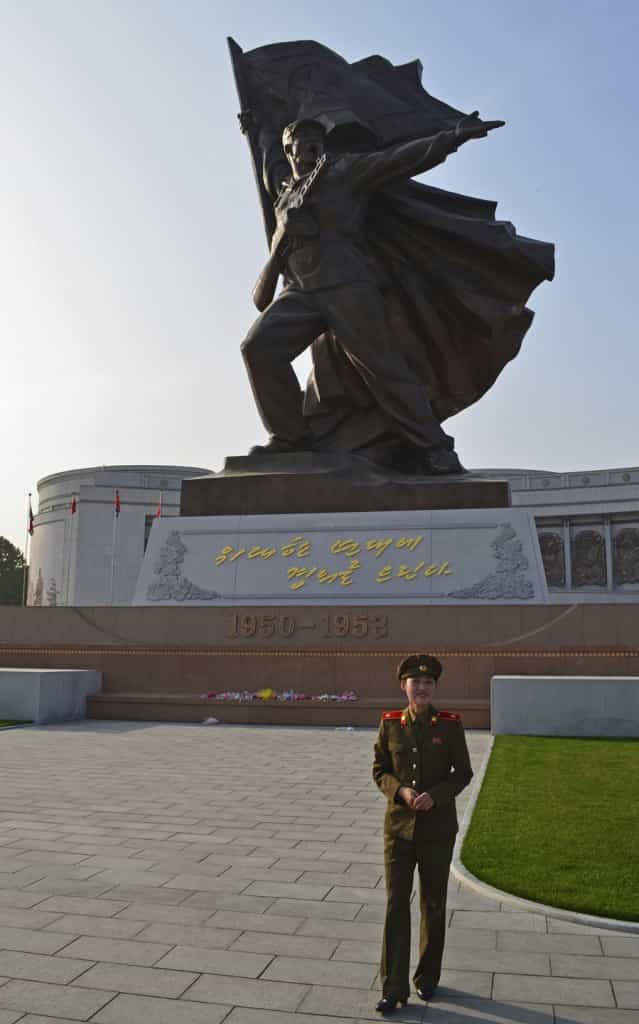
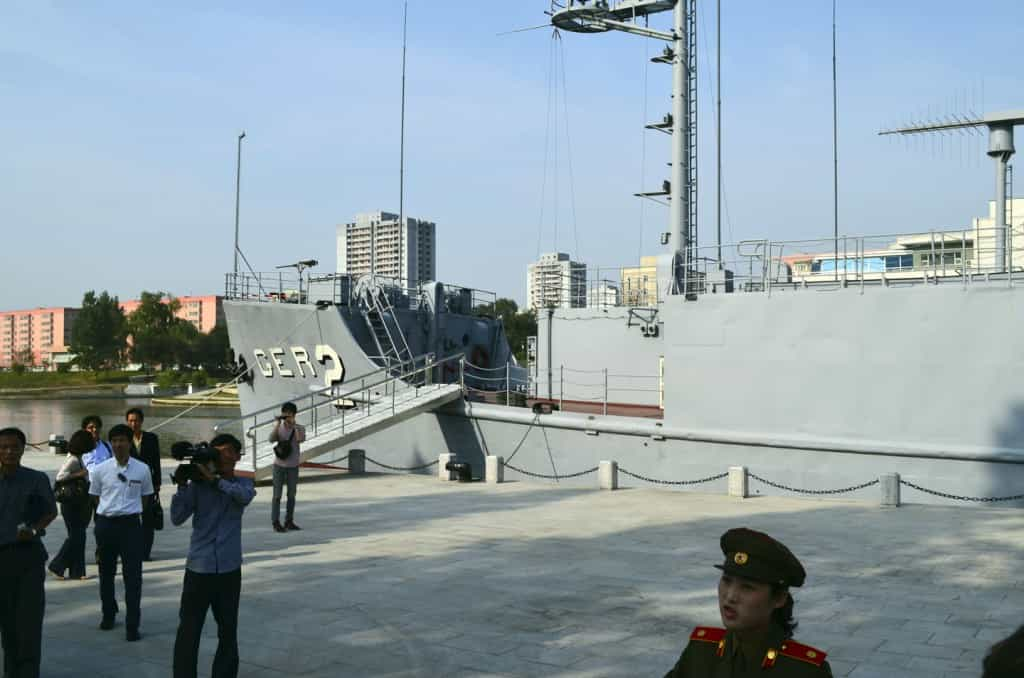
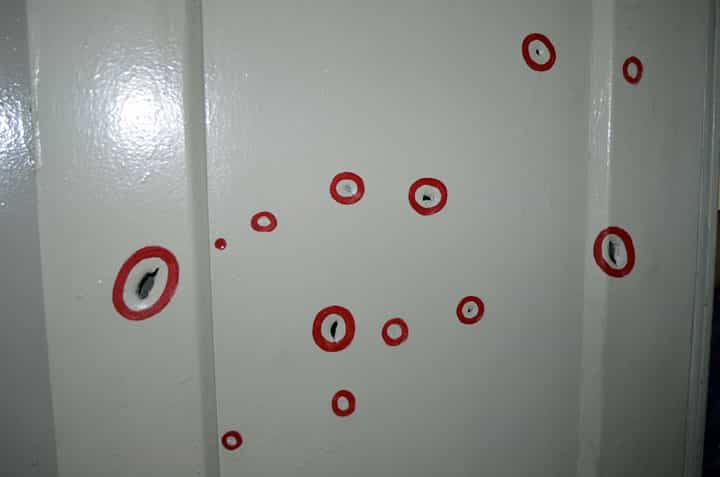
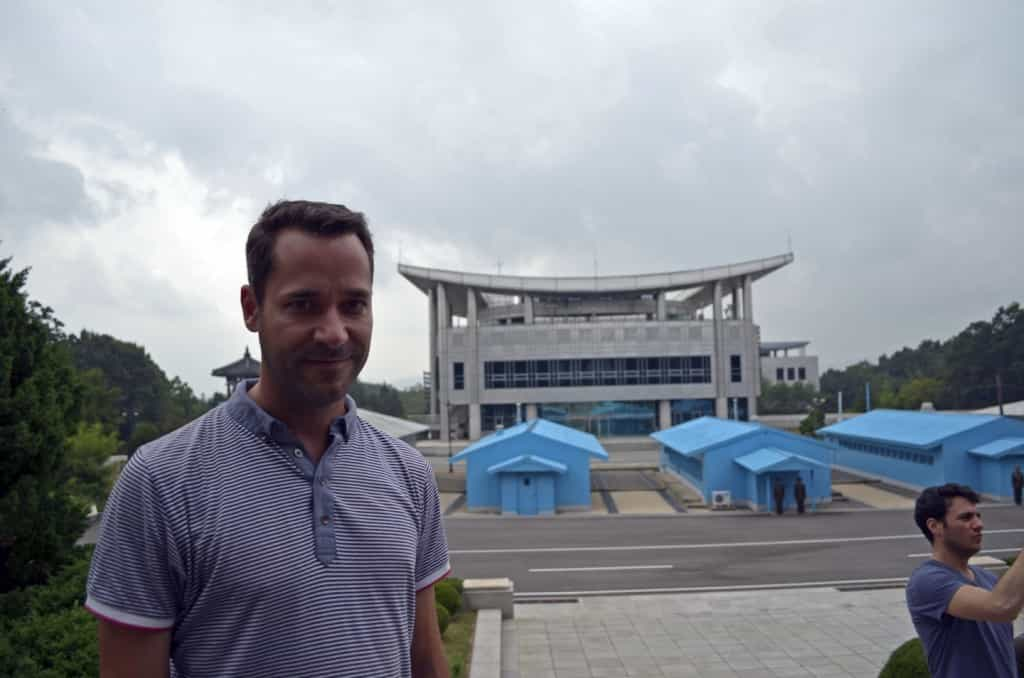







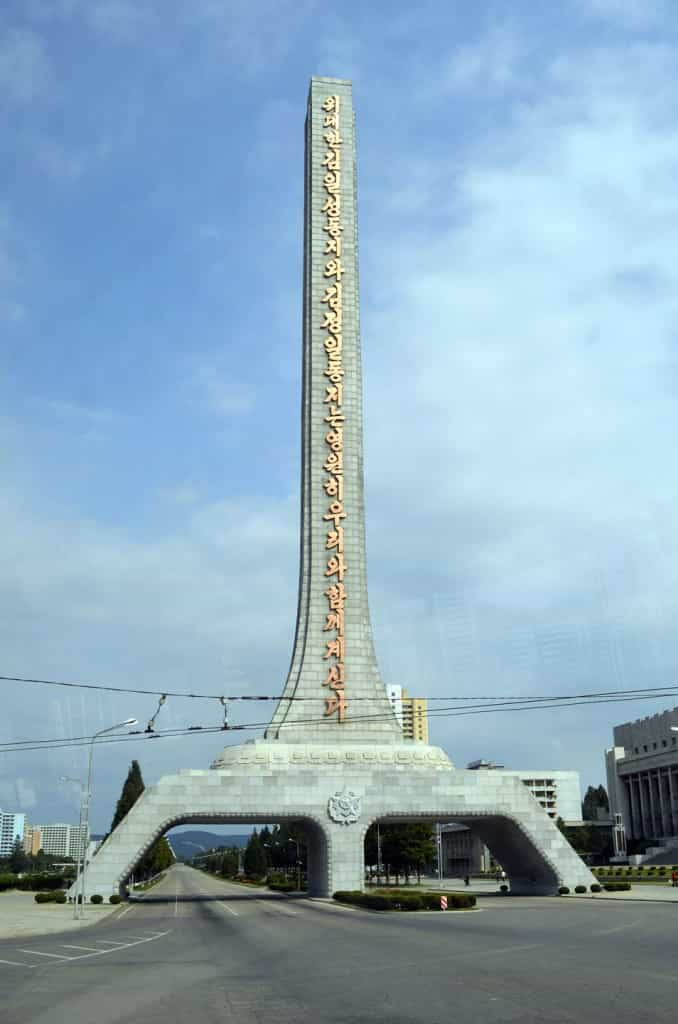
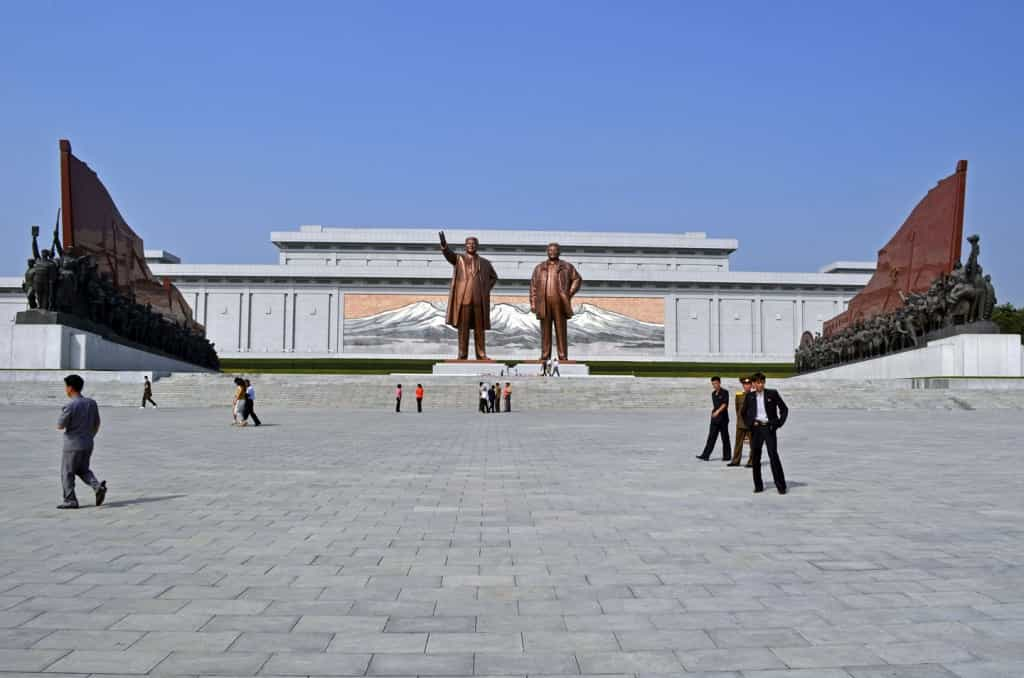

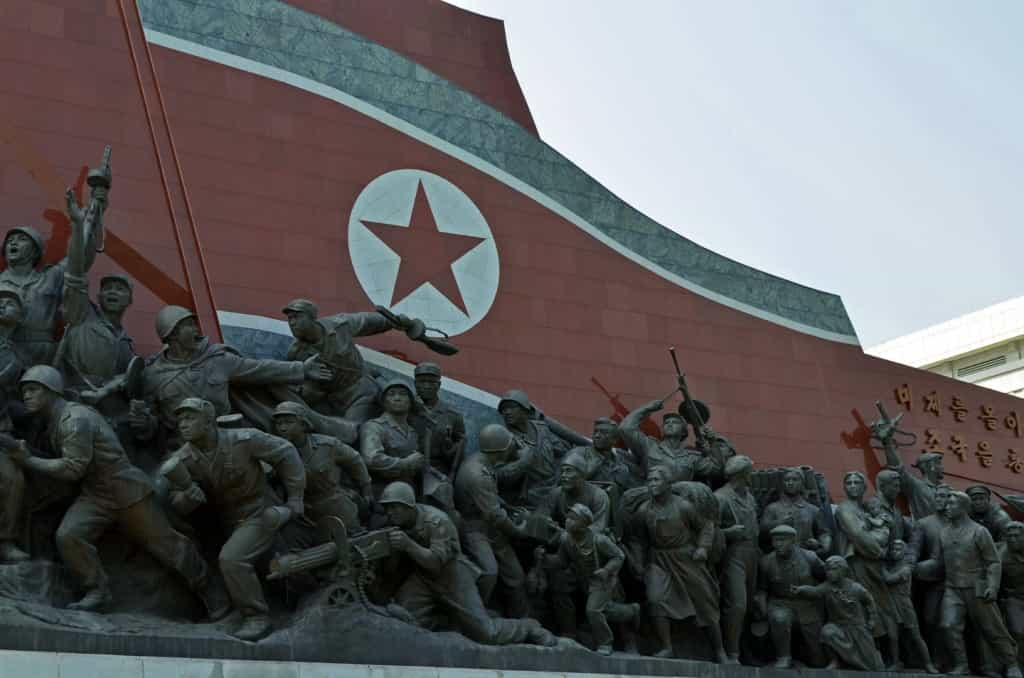

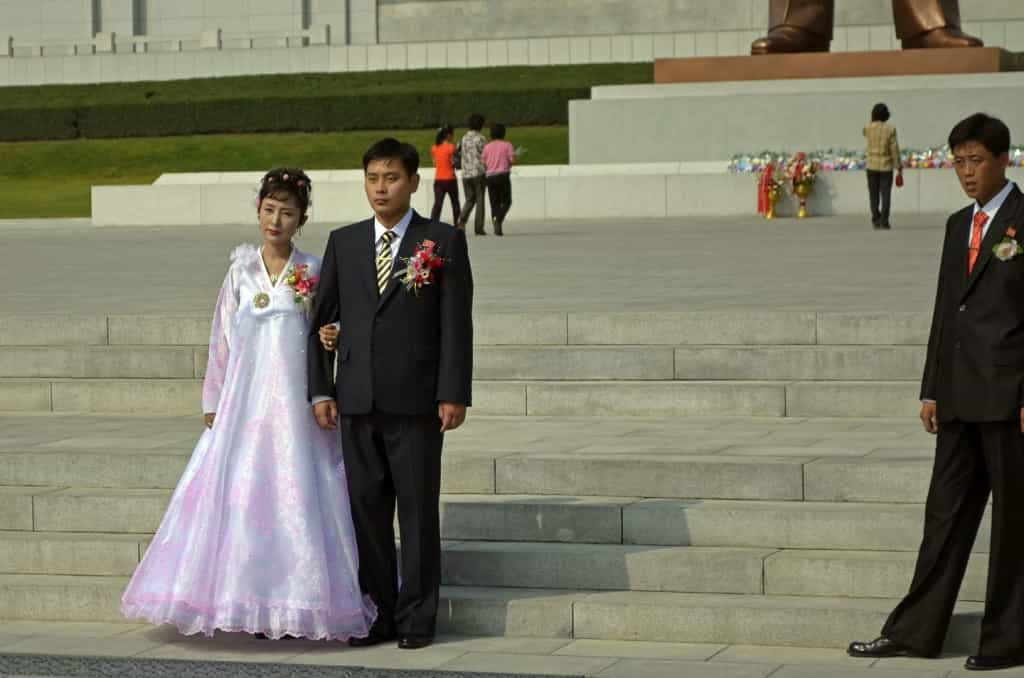





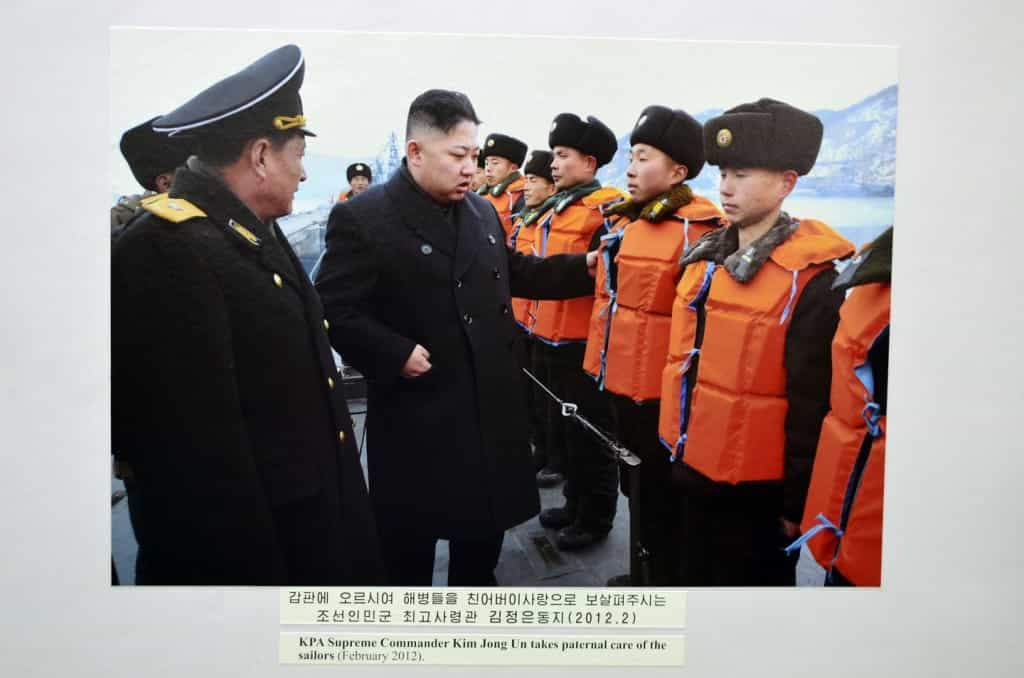

Truly fascinating. Thank you. I wonder what would happen if a tourist refused to bow!
He would be shot on sight! Seriously, the (Western) guide actually asked if somebody had a problem with it, so there was definitely a way out. I guess you could stay in the bus, or watch from a distance. But to go to the monument and then refuse to do it (and make it obvious) would mainly land the Korean guides in big trouble, the normal consequence of tourists misbehaving, and then poison the atmosphere for everyone. Although if you go to the DPRK to cause trouble, they’ll just put you on the first plane back to China, tour or no tour.
Thanks for the compliments!
Great posts Colin, just noticing that a lot of your photos in public places don’t have many people around? Is there hustle and bustle like most Asian cities?
Thanks Jon. Not really, there’s not much street life, although the parks are busy. Like in many communist countries in the old days, things are supposed to look nice, especially in the capital, so no street food, vendors, etc. No private businesses anyway. Not a lot of traffic either, but the metro is very busy. Communist architecture and urban design also contribute to your perception. Sometimes there are a lot of people around, but the streets, squares, buildings and everything else are so huge, they all look empty.
Merci encore, camarade Colin !
De rien!
Pingback: The United Nations Memorial Cemetery in Korea, the only UN cemetery in the World. | Colin’s Notes
Pingback: Visiting Beijing – and trying not to get hit by a car. | Colin’s Notes
Wauw it’s was a really interest post to read! For me North Korea is one of the most intriguing, but also one of the most corrupt places on earth. Currently, I’m writing my profile assignment about the indoctrination of North Korea. So it was really fascinating to hear about your experience.